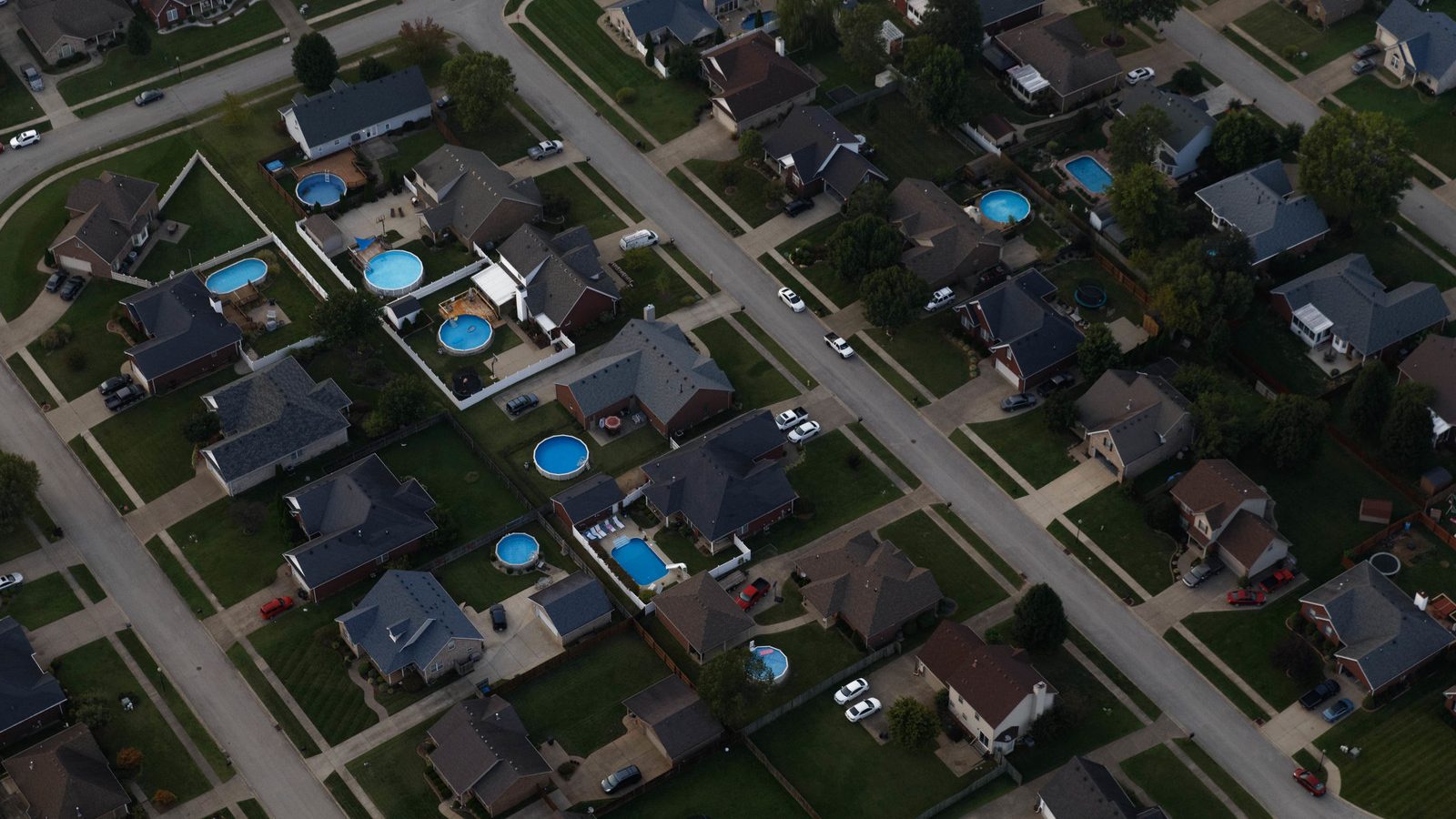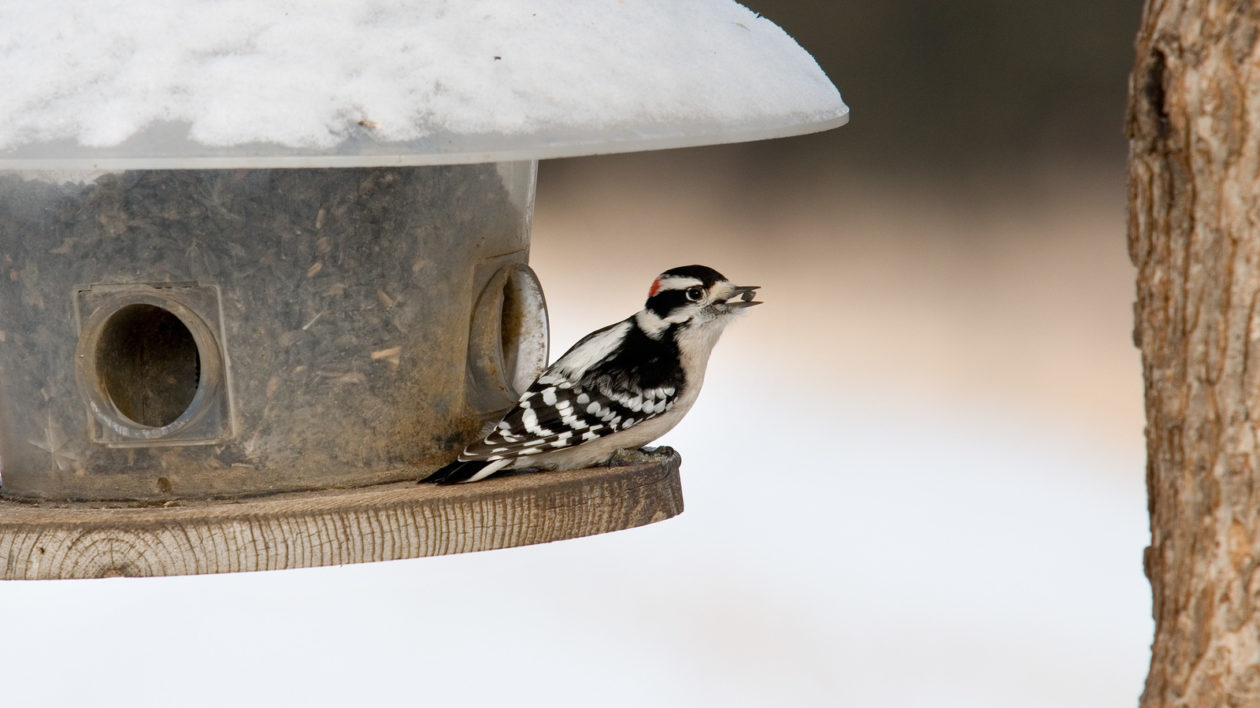Yesterday, I gazed out the window of my home office during a meeting, watching California quail and house sparrows forage beneath native sumac. Suddenly, the bush seemed to explode, with birds flushing in every direction.
A second later, a Cooper’s hawk deftly landed underneath the shrubbery. It began hopping around attempting to snag one of the remaining quail that hunkered down instead of flushing. But the hawk was just a little too late.
Over the years, I’ve noted more frequent sightings of both Cooper’s and sharp-shinned hawks around the neighborhood. You’ve probably noticed the same thing. Across the United States, these two hawk species – both similar looking and in the genus Accipiter – have increasingly colonized urban areas.
A new paper in the Proceedings of the Royal Society B sought to “identify factors that determine the occupancy, colonization and persistence of Accipiter hawks in a major metropolitan area.” In the course of their study, the researchers from the University of Wisconsin-Madison and Cornell Lab of Ornithology found that in the 1990s Accipiter hawks occupied 26 percent of sites around Chicago. After two decades, they occupied close to 67 percent of sites.
It’s a trend reported (often via citizen science) around the country. And a big part of it is the bird feeder in your backyard.
The Return of Raptors
By the mid-20th century, many raptor species, including Cooper’s and sharp-shinned hawks, had declined precipitously. Direct persecution and pesticides had taken a heavy toll. Decades of protection have caused populations to rebound, leading raptors including accipiters to reclaim habitat.
But as the birds spread, they found a new world: one of growing cities. One might initially conclude that predators would not find this new world to their liking, as it was covered in concrete and buildings instead of forests. And that’s certainly true for many wildlife species.

But, as the researchers note in their recent paper, cities present a mix of habitats, including backyards, parks and golf courses with plenty of space. These “novel ecosystems” provide opportunity for cover and also, often, for ample food supplies.
The researchers documented the spread of the two hawk species in Chicago via observation through remote sensing data and Project FeederWatch, a citizen science initiative that has conservationists record sightings throughout the winter.
Initially, the hawks colonized areas outside the city. But they increasingly spread to more and more urbanized areas. The researchers documented usage of areas defined by what they call impervious features: roads, buildings, sidewalks. The more impervious the area, generally, the less “green” habitat.
Initially, hawks avoided these highly developed zones. But eventually, as long as there was sufficient prey, they colonized even the downtown. Over the past two years, hawks went from the city fringes to occupying much of the metropolitan area.
The researchers hypothesized that reforestation would play a role in hawk recolonization. But it didn’t. In fact, wintering hawks preferred areas with fewer trees, perhaps to better hunt prey.

The Hawk at the Feeder
Bird feeding is a hugely popular urban pastime. More than 40 percent of U.S. households feed their backyard birds.
That creates an abundance of birds, concentrated in specific, predictable areas. A predator’s bonanza.
The researchers found that the predator’s persistence in urban areas was most influenced by abundant prey. Based on citizen science and other research across the country, hawks have taken advantage of the bounty of bird feeders across the country.
Cities are rapidly changing. The novel ecosystems they create are also highly dynamic and, often, poorly understood. Songbirds, like northern cardinals, may even expand their range due to feeders. Then predators recolonize, shifting species behavior and abundance.

The researchers cite studies in England that show the recolonization of Eurasian sparrowhawks in cities caused a dramatic decline in house sparrows as well as other species commonly found at bird feeders. The sparrows had exploded in population due to the free food sources and lack of predators. When the predators returned, it caused an immediate shift in the urban ecosystem. It’s not so different, really, than what happened when wolves were reintroduced to Yellowstone and found a park with an over-population of elk.
The researchers note that similar shifts in prey abundance might be expected in Chicago and other cities. Some studies have found that urban hawks are feeding heavily on European starlings, house sparrows and pigeons – all non-native species – so they could actually reduce competition for native songbirds.
Do bird feeders change migration patterns? At least one study found that sharp-shinned hawks on the East Coast were less likely to migrate due to the abundance of bird feeders.
Research into Urban Ecosystems is Vital for the Future of Conservation
Clearly, research into urban ecosystems is vital for the future of conservation. Understanding how species interact, and how species use new habitats, can help better design parks and refuges. Perhaps endangered animals that many consider incompatible with cities actually could recolonize urban areas if given a chance. After all, 50 years ago no one considered the Cooper’s hawk to be an urban bird.
And let’s not forget a key factor in helping scientists understand urban wildlife: you. The observations you make at your bird feeder, at the city park and along a greenbelt trail help researchers understand novel ecosystems and their wild inhabitants. While your observations may seem anecdotal, when combined with millions of other observers, they add up to a significant data set.
So, yes, you really are seeing more hawks at your bird feeder. Enjoy the show this winter: the restoration of the predator-prey dynamic to the urban wild.




We live west of Cleveland, Ohio and a mile and a half from Lake Erie. Our property is surrounded by a city park of which the land beside ours and behind ours is wooded. Several years ago a pair of bald eagles began nesting at an elementary school nearby. The school set up a web camera so they could be observed. At our house, we feed the birds everyday in the winter but not during the summer. We are pretty sure we have seen a Merlin here but any attempt to take a photograph and he is off, a very wary bird. This year we have a red-tailed hawk who has taken up residency in the woods just a few feet from the bird feeders. It is quite apparent when he is nearby as all the small birds vanish from the feeders. I have scared him away unintentionally when I make a trip to our composter at the edge of the woods. What has surprised me is that he is on the ground, not in the trees. We have many sparrows and doves at the feeders so no wonder a hawk has taken up residence. Thank you for the wonderful article.
Great news that they feed primarily on the doves, starlings and sparrows, but we’ve noted that the occasional woodpecker and flicker are victims. This is heartbreaking but I guess not all that surprising. And those woodpeckers, I imagine are not endangered. We don’t live in an urban area- more rural here and one of the many joys of bird feeding here is the abundance and variety of birds that visit.
I had not noticed an increase is predatory birds until last week a Coopers Hawk hit my kitchen window which looks out to a bird feeder. Sadly he didn’t live. (FYI he is now with the game warden). I also noticed an Osprey for the first time a couple of weeks ago at my pond eyeing my ducks. Thank you for a well written, very relevant article.
I have to be careful concerning any Hawks I have two small dogs. Hawks around are not a pretty site for me.
Very interesting. I live in Denver and put up a feeder about 2 months ago. I’ve had very, very few customers and have been wondering why. Likely a combination of a mild winter (abundant natural forage) and increased presence of predators.
Have also noticed a conspicuous absence of sparrows. That is a new thing. In other years, you’re feeding about 30 sparrows for every house finch or chickadee.
Welcome back, hawks. Just leave the songbirds alone.
Excellent article! A week ago I saw a red-shouldered hawk perched on a fence close to our backyard feeder. It was the first time to see one in the back yard!
Great article! Thank you…
Im sharing to my page on facebook!
We have several Coopers hawks that we’ve seen off and on in our back yard in Mt Wolf, York Country, PA. We have a bird feeder and have seen two occasions when they have captured doves. On one occasions two of them circles above me coming ever closer when I was standing in the backyard. We live in a large subdivision right on the edge of agrarian areas, mostly corn fields. We moved the feeder closer to the five large leyland cypress trees we planted six years ago. They seem to provide some shelter for the birds. Seeing a hawk take a bird is not something I like to see but I do understand that they have a right to hunt and survive. Good news that they have made a comeback.
I had a beautiful hawk in my backyard for a couple of days at the end of December 2018. Didn’t get a good photo but, it was amazing to see up close..
I am having more hawk sightings since the vegetation has been stripped down due to H.M. Hurricane, just realized that could look like her majesty. My city was a tree city, we had huge numbers of white oak 50 plus years old and the winters are mild 30 degrees North lat. Your article caught my eye and was wondering if these hawks would migrate from here. Not sure of the type, Jacksonville 300 miles east have hawks year round.
I was just thinking that I have seen at least one daily for the past few months here in the DC burbs of Maryland! Thank you for the article!
ALTHOUGH I ENJOY ALL BIRDS I AM NOT!!! A FAN TO SEE A HAWK SWOOP DOWN ON MY BIRD FEEDER AND NAB ONE OF MY BIRDS.I ACTUALLY SAW THIS ONE DAY ON MY LUNCH BREAK FROM WORK AND IT QUITE UPSET ME AND WREAKED MY DAY.I WENT BACK TO WORK IN TEARS.I KNOW THIS IS NATURE..BUT IT BROKE MY HEART FOR THE BIRD THAT GOT SWOOPED UP ON.????
I would enjoy having citation information for the article that’s mentioned. I would like to read it for myself.
Hi — thanks for your note. There’s a link to the publication in the blog…but here’s the direct link as well: https://royalsocietypublishing.org/doi/full/10.1098/rspb.2018.2120
I have a tree cylinder feeder in front and a trap door feeder in back and even with 7 or 8 inches , I don’t see as many sparrows asI used to . I see some nuthatches , juncos, chickadees , occasional red breasted woodpecker , and cardinals . The small ones go from my evergreen bushes and the feeders ,they are very watchful and nervous . l’m suspecting our smaller hawks we have in this area , once I saw a Peregrine Falcon , Great Horned Owl and a Red Tailed Hawk . Seems there are less sparrows and smaller birds here too !
Makes a lot of sense
I had thought that the recent influx of Cooper’s Hawks in our neighborhood was due to a very steady supply of squirrels.
The squirrels consume a large percentage of the seed we put out for the birds!